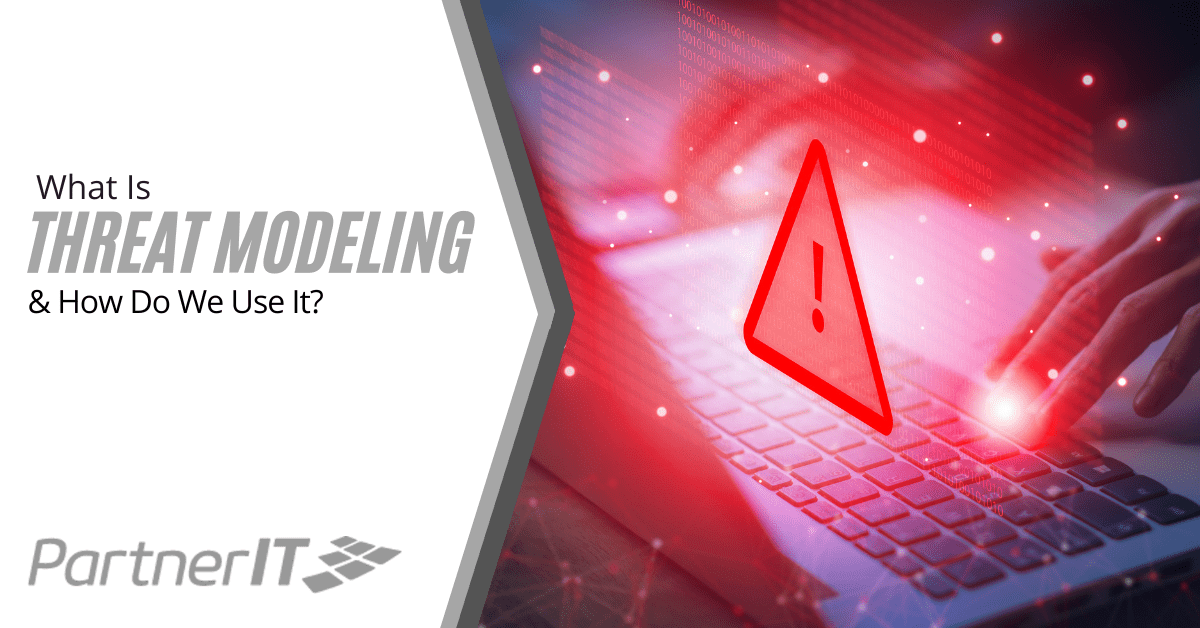With the number of cyberattacks rising, cybersecurity remains a top priority in today’s IT world. Security breaches have become a norm in the commercial sector, and at least one breach of a major company is being reported monthly. However, these attacks are not limited to large businesses only. In fact, small and medium-sized businesses are more vulnerable because of a lack of adequate cybersecurity measures. According to Forbes, 43% of all data breaches are targeted at SMBs (Small and Medium Businesses).
As a result, cybersecurity professional teams are organizing a slew of defenses and countermeasures to safeguard transactional and sensitive data. Given the high number and variety of cyberattacks available today, it’s a massive task. One method to counter this is threat modeling, and it is currently making inroads in the cybersecurity world.
Threat modeling is preferred because it is one of the most proactive approaches to identifying and evaluating potential security threats, risks, and vulnerabilities in your business. This article highlights the concept of threat modeling and how to implement it. Read on to learn more about this practical concept.
What is Threat Modeling?
Before defining threat modeling, let’s look at the definition of threats in cybersecurity settings.
Threats refer to digital objects or processes that can exploit a vulnerability to breach security and negatively alter, erase, or harm systems and things of interest.
Going further, threat modeling is a set of structured, repeatable processes that allow businesses to make effective decisions about the security of applications, software, and systems. It is the process of sharing and identifying information about cybersecurity threats that can affect a specific network or system.
Threat modeling assists IT teams in understanding the nature and potential impact of threats on the organization. While it can be done at any point of the development process, doing so early on will aid in identifying threats that can be dealt with appropriately. Analyzing threats and determining their risks to an organization’s apps and processes becomes easier with threat modeling.
Threat modeling help businesses in protecting critical processes and assets deployed outside the corporate network, such as cloud systems for data backup or protection or IoT devices, in addition to applications and networks. The flexibility of threat modeling provides organizations with a cybersecurity arsenal to protect against various attack vectors.
The threat modeling process is determined by the system being investigated. Most business processes that rely on information technology can benefit in one way or the other. Threat modeling enables security analysts to target threats to a specific system. It clears up any confusion about threats and how to mitigate them. It also provides the IT team with the information they need to secure systems before damage occurs.
How Does Threat Modeling Work?
Threat modeling works by identifying the various types of threat agents that can harm an application or computer system. It puts itself in hackers’ shoes to see how much damage they can cause. When performing threat modeling, organizations conduct a well-detailed analysis of the software design, business context, and other objects like functional specifications and user documentation.
This process allows for a more in-depth understanding and discovery of important system aspects. Threat modeling is typically performed during the design stage of a new application to help developers identify vulnerabilities and be notified of the security implications of their code, design, and configuration decisions.
The Threat Modelling Process
Threat modeling involves several key processes that can be divided into four major steps:
Specify the system
System analysis is defined in detail. This includes identifying and comprehending all the assets involved, such as software, hardware, and data.
Identify potential threats
This step entails identifying potential threats to the system’s security. This entails considering all potential attack vectors, such as network breaches, social engineering, and malware infections.
Assess potential threats
This step evaluates each identified threat to determine its potential impact on system security. Each threat’s likelihood and consequences are considered when determining its risk level.
Create countermeasures
Finally, countermeasures for each identified threat are developed. Technical solutions, such as firewalls or intrusion detection systems, can be included, as well as process improvements, training, or other non-technical solutions.
Why is Threat Modeling Important?
As organizations go digital, IT systems become more vulnerable to cyberattacks. Strategies such as BYOD and the rising use of personal mobile devices also broaden the threat landscape. These make businesses (especially SMBs) less immune to cyberattacks, as they are more vulnerable due to insufficient cybersecurity measures. Hence, businesses need to be proactive regarding threats to their systems and processes.
Since threat modeling is a proactive approach to detecting threats, it is critical for organizational security. This approach produces secure processes and applications while effectively utilizing resources by prioritizing anticipated threats.
Benefits of Threat Modeling
The following are some of the advantages of threat modeling:
It increases operational visibility
While many security tools are designed to monitor and control risks at the enterprise level, threat modeling applied at the application level provides developers with clear operational visibility into which specific applications (and which components of those applications) are the most vulnerable to cyber threats. With this knowledge, developers can focus on developing fixes. At the same time, the professional cybersecurity team ensures the necessary controls are in place.
It increases compliance
Threat modeling assists businesses in complying with data privacy and security laws and regulations. These help organizations understand how they may be putting sensitive data at risk. For example, the GDPR requires organizations to conduct a Data Protection Impact Assessment (DPIA) before embarking on new projects that process personal data.
It improves collaboration
Threat modeling assists in bringing all departments within an organization on the same page. Threat modeling ensures that everyone from your IT team to executives and key stakeholders works on the same constructs and assumptions by defining your IT resources and the issues they face.
It helps save cost
Threat modeling can help organizations avoid costly security breaches and data loss by identifying and mitigating potential security risks early in development. This has the potential to result in significant long-term cost savings.
It improves risk management
Threat modeling not only detects flaws but also improves risk calculation. This means you can prioritize reductions and manage risk in systems in accordance with the policies of your organization.
It makes risk prioritization easier
Businesses can use the data provided by threat modeling to decide which security risks to prioritize, which is useful for determining where to allocate people and budget resources.
Implement Threat Modeling In Your Business Today With PartnerIT
Threat modeling has numerous advantages, from removing potential attack vectors to increasing regulatory compliance. Threat modeling should be done regularly by any organization looking to improve its cybersecurity posture.
PartnerIT can assist your business in implementing threat modeling and carrying out the process at affordable costs without sacrificing effectiveness and quality. Contact us today to get started.



